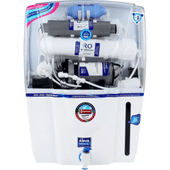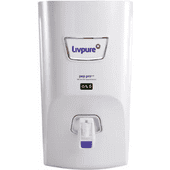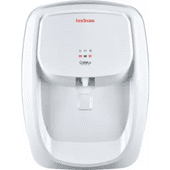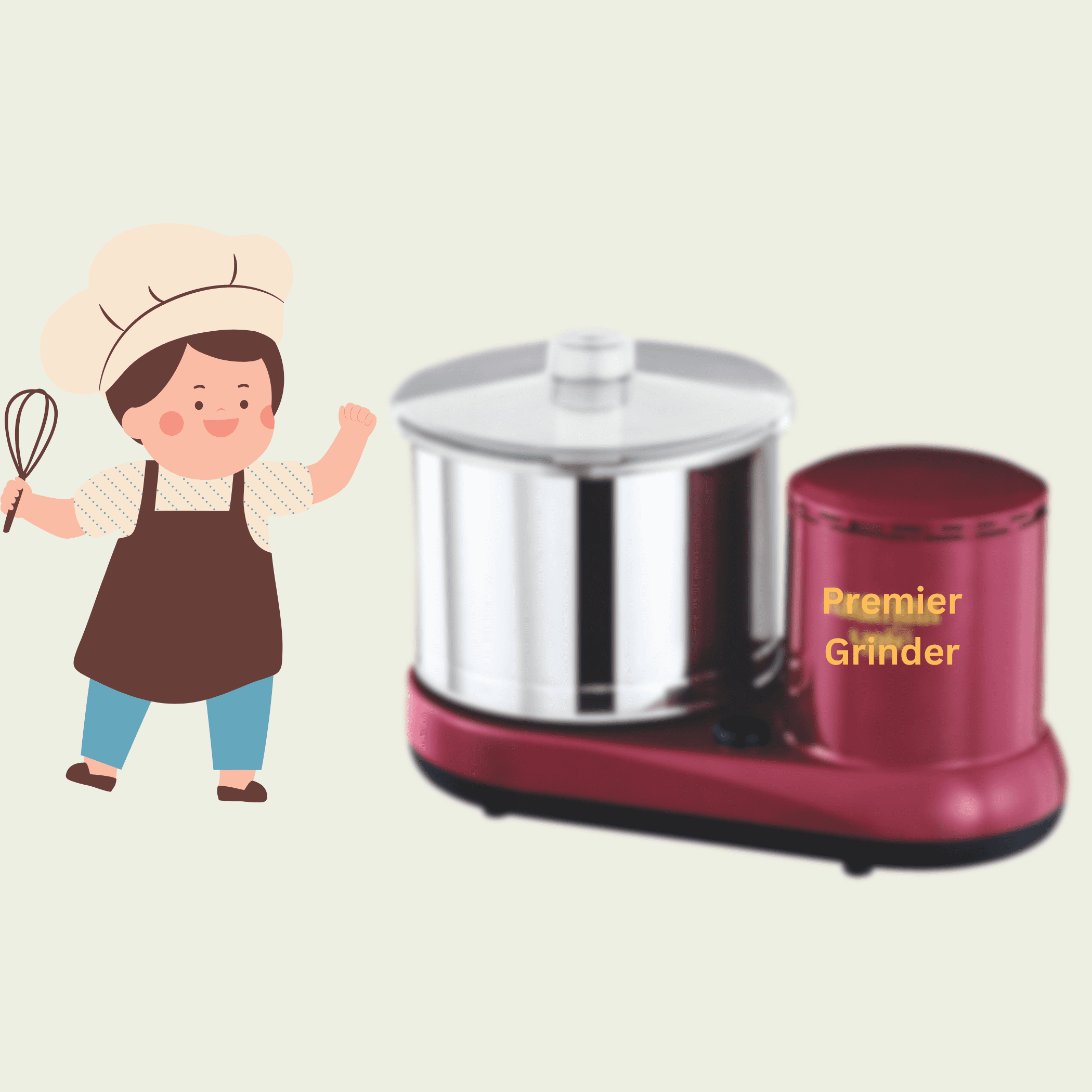Table of Contents
ToggleUnmasking the Hidden Side Effects of RO Water Purifiers: Are They Harming You?
Having clean water means reverse osmosis water, is trending nowadays. RO is trusted by most of the peoples. The strongest reason for this trust is that it purify the water by removing most of the harmful impurities from the water. WHO warns that consuming reverse osmosis water creates a very serious Side Effects of RO Water Purifier even if consumed with few drops of RO water. It is scientifically proved that drinking RO water affects the body very badly and in very fast way than contaminants found in tap water.
- Nowadays, RO systems are used at a very large level. You can find ROs almost in every house. As we know, the RO system removes most of the impurities from the water. It is also removed more than 90% of calcium and magnesium that are beneficial for our body.
- A number of a scientist study over RO water for many years and found that such water harms humans as well as animal organs. Even if you consume RO water for a few months only.
- RO water was used at a Wide level in the Czech Republic and Slovac. And the population of these two countries developed various health complaints that include acute magnesium. People experience tiredness, weakness, and cardiovascular disorder.
- RO water does not have enough minerals, but when RO water is consumed, it leaches minerals from the body. RO water is this much dangerous that it takes out the minerals and vitamins consumed in the form of food. Due to RO, we consumed less mineral Plus more minerals excreted from the body and it causes more serious problems. The minerals killed by RO water do not compensate for other diets. RO water eliminates more minerals from the body.
Why RO kills other minerals too?
The drinking water in India is mostly contaminated. This is the main reason behind the increased popularity of ROs. RO purification is renowned for its ability to eliminate detrimental impurities such as disease-causing microorganisms and harmful heavy metals like lead, arsenic, and mercury. However, it is important to note that this process also filters out certain essential minerals like calcium and magnesium. The reason behind this lies in the molecular size of these minerals, which happens to be larger than that of water molecules. Consequently, the RO membrane exclusively allows water molecules to permeate through its filtration system.
- Due to the removal of essential minerals during the purification process, some individuals argue that RO water may not be beneficial for overall health. They point to the fact that minerals like calcium and magnesium are crucial for the body, and the process of RO filtration eliminates them. This viewpoint is supported by the World Health Organization’s report titled “Health Risks from Drinking De-mineralized Water.”
- However, it is important to acknowledge that RO purification remains unparalleled in terms of its effectiveness and widespread usage among various water purification methods. While the removal of minerals is a valid concern, it is essential to consider the broader context of water safety and the elimination of harmful contaminants that RO purification provides. Many argue that the potential loss of minerals can be compensated for through a balanced diet or supplementation, ensuring an adequate intake of essential minerals alongside the consumption of RO-purified water.
- Reduce the pH level
- During the process of water filtration through a semi-permeable RO membrane, numerous organic and inorganic components are unable to pass through. However, certain gases, such as carbon dioxide (CO2), can permeate the RO membrane.
- Once inside the water, CO2 interacts with the free hydroxide ions (OH-) present, resulting in the formation of acidic hydrogen carbonate or bicarbonate ions (HCO3-). At the same time, the hydrogen ions (H+) within the water do not find any substances to react with since the majority of impurities have been removed by the RO membrane. As a result, the concentration of hydrogen ions in the water remains relatively low, contributing to a slightly alkaline pH in the RO-purified water.
- Indeed, when water contains an excess of H+ ions, its pH level decreases, making it more acidic. The pH level can be influenced by the presence of CO2, with higher concentrations leading to a lower pH.
- However, it’s important to note that the human body has remarkable mechanisms in place to maintain a nearly neutral pH of 7.4 throughout its systems. When slightly acidic water is consumed, it quickly loses its acidity upon contact with saliva in the mouth and the presence of food in the stomach.
- If you have specific health concerns or are aiming to lose weight, it is generally recommended to avoid acidic beverages and those with added sugars. Instead, opting for pH-neutral or slightly alkaline water can assist in maintaining a balanced acidity level in your overall diet. This can contribute to overall well-being and support your health goals.
- Minimum Level of TDS
- Limited contemporary research has been conducted to establish specific guidelines regarding the minimum quantity of minerals or Total Dissolved Solids (TDS) in water. However, the significance of minerals and other beneficial components in drinking water has been recognized for centuries, with references found in ancient Indian texts like the Vedas.
- The Rig Veda, for instance, provides a clear description of desirable qualities in drinking water, emphasizing factors such as cleanliness, nutritive value, essential minerals, trace elements, transparency, and a balanced acid-base ratio.
- In a report published by the World Health Organization (WHO) in 1980, it was suggested that the minimum TDS level in drinking water should be 100 mg/L. For chloride-sulfate waters, the recommended optimum TDS range was around 200-400 mg/L, while for bicarbonate waters, it was 250-500 mg/L. Water with a TDS of 25-50 mg/L was regarded as tasteless.
- The report also outlined that the minimum calcium content in drinking water should be 30 mg/L. Furthermore, it revealed that certain European countries like the Czech Republic and Slovakia endorsed an optimal magnesium level of 10-30 mg/L in drinking water.
- It is important to note that further research and local considerations may have since influenced these guidelines. It is advisable to refer to updated local standards and consult relevant authorities to obtain the most accurate and region-specific information regarding mineral content and TDS levels in drinking water.
Bad effects on homeostasis mechanisms
There are many Side Effects of RO Water Purifier. Taking RO water dilutes electrolytes from our body water. This lead to inadequate body water distribution that results in the improper functioning of important organs. The very starting side effect of RO water is like weakness, headache, and tiredness. By the time you consume RO water, its symptoms are more severe like improper heart rate and muscular cramps.
- Causes many diseases
There are multiple studies done to prove that RO water may cause heart diseases, ulcers, gastric, pregnancy problems, goiter, and severe gastric problems.
RO water for cooking
If RO water is used for cooking, it causes the loss of all important elements available in the water as well as in the food. These losses for magnesium and Calcium are up to 90%. If we compared RO water with mineral water for cooking, the loss of these elements is much lower.
Re-mineralise RO water is not possible !!
As per World Health Organisation, if minerals were added into RO water it is not optimum. It is impossible to recreate natural water from RO-treated water.
Disclosure: Some of the links below are affiliate links. This means that, at zero cost to you, I will earn an affiliate commission if you click through the link and finalize a purchase.
We have a list of One of the best RO (Reverse Osmosis) you can buy.

- Color: White
- Brand: Aqua Fresh
- Power Source: Corded Electric
Check Price NOW !!


- Color: White, Blue
- Brand: Pureit
- Special Features: RO+UV, High Storage Capacity, Energy saving.
Check Price NOW !!


- Color: White
- Brand: Kent
- Features: RO + UV + UF + TDS Control + UV in Tank + Copper
Check Price NOW !!

- Color: White
- Brand: Hindware
- Features: RO + UV + UF
Check Price NOW !!

- Color: Black
- Brand: Aquaguard
- Features: RO + UV + UF + MTDS
Check Price NOW !!

- Color: Black
- Brand: Aquaguard
- Features: RO + UV + UF + MTDS
Check Price NOW !!
What are the alternatives to RO water?
Multiple alternatives can be used to replace the RO water. These are
- Boiling water
To ensure safe drinking water, proper boiling must be done. It is good to let the water steam for a couple of a minute. However, boiling water is not capable to kill all the contaminants in the tap water. There are multiple situations when boiling water is not possible.
These situations might be a shortage of electricity, fuel, for heat sources.
- Chlorine
Chlorine water is mostly safe to drink if added in the proper ratio. You can add 4 drops of liquid bleach in one liter of water, 16 drops in per gallon of water. Let this rest for half an hour to eliminate the contaminants from the water. Kindly note that more than required chlorine is dangerous to human and animal health and it must be used with the proper caution.

- Iodine
Iodine can be used to clean the water and remove the contaminants. Add 4 drops in 1 l of water. You can use a few more drops if required. Allow it to sit for at least 30 to 40 minutes. Iodine works very well if the temperature of the water is more than 21 degree Celsius. Iodine is also not capable to kill a hundred percent of the contamination present in the water.
- Carbon Filters
Carbon filters, such as activated carbon or charcoal filters, effectively remove common contaminants like chlorine, sediment, and some chemicals. They can improve taste and odor without removing essential minerals from the water.
- UV Purification
Ultraviolet (UV) purification systems use UV light to kill or inactivate bacteria, viruses, and other microorganisms. While UV systems do not remove chemicals or dissolved solids, they are effective against biological contaminants.
- Ceramic Filters
Ceramic filters consist of small pores that can block contaminants like bacteria, protozoa, and sediment. They are an affordable and easy-to-use option, but they may not remove chemicals or heavy metals.
- Ion Exchange Filters
Ion exchange filters use resins to remove minerals like calcium and magnesium that cause hardness in water. These filters exchange the minerals for sodium or potassium ions, resulting in softened water. However, they may be not capable to remove other contaminants.
- Distillation
Distillation involves boiling water and then collecting the condensed vapor. This process effectively removes most contaminants, including minerals, but it can be time-consuming and may require additional post-treatment to enhance the taste.
- Mineralization Filters
Some water purification systems include mineralization filters that add back essential minerals to the purified water, addressing the potential mineral loss associated with RO systems.
- Government should take responsibility
People prefer RO water because the public water supply is not good enough. The quality of the water is not up to the mark. Government should take action to provide safe and clean drinking water to the people. It must be the government’s priority.
People should be aware
It is important to aware the public about the side effects of RO water. This responsibility can be taken by the doctors who can educate the public about the danger of RO water and Council them to adopt alternatives to RO water.
Is it advisable to discontinue the use of RO purifiers?
Considering the alarming findings presented earlier, it may be understandable to contemplate discontinuing the use of RO purifiers. However, completely abandoning RO purifiers is not the recommended solution, as it would expose you to significant risks associated with waterborne diseases caused by impurities. It is important to recognize that no other water purification method currently matches the effectiveness of RO purification.
- Instead, the key lies in addressing the limitations of RO purification through the utilization of advanced technology. The ideal approach involves adopting a technology that can re-mineralize or reintroduce essential minerals back into the demineralized RO purified water. By implementing such a technology, the concerns regarding the loss of minerals can be effectively addressed, ensuring that the purified water retains its essential nutrient content.
How to Remineralize RO Water?
Remineralizing RO Water can be achieved through various methods to restore essential minerals into the purified water. Here are a few common approaches:
- Mineral Cartridge/Filter
Install a mineral cartridge or filter specifically designed for remineralization after the RO system. These cartridges typically contain mineral beads or media that release essential minerals into the water as it passes through.
- Mineral Drops or Solutions
Add mineral drops or solutions that are specifically formulated for remineralization. These products typically contain a blend of essential minerals in liquid form. Follow the instructions provided by the manufacturer to add the appropriate amount of drops or solution to your RO water.
- Mineral Stones or Rocks
Place mineral stones or rocks, such as coral or limestone, in a separate container or water pitcher and allow the RO water to flow over or through them. The minerals present in these stones can gradually dissolve into the water, remineralizing it over time.
- Mineral-rich Additives
Add mineral-rich substances like Himalayan pink salt or sea salt to your RO water. These salts contain a variety of essential minerals that can help restore the mineral balance in the water.
Foods that contain Magnesium
Magnesium found in multiple foods. Here are some examples of foods that are good sources of magnesium:
- Leafy Greens: 1. Spinach 2. kale 3. Swiss chard, and 4. collard greens are the best sources of magnesium.
- Nuts and Seeds: Almonds, cashews, Brazil nuts, pumpkin seeds, and sunflower seeds are rich in magnesium.
- Legumes: Black beans, kidney beans, chickpeas, and lentils are good sources of magnesium.
- Whole Grains: Whole wheat, brown rice, quinoa, oats, and buckwheat are grains that contain magnesium.
- Fish: Some types of fish, such as salmon, mackerel, and halibut, provide magnesium along with other beneficial nutrients.
- Avocado: This creamy fruit is not only delicious but also contains magnesium.
- Bananas: In addition to being a good source of potassium, bananas also contain magnesium.
- Dark Chocolate: Dark chocolate with a high percentage of cocoa solids is a tasty way to obtain magnesium.
- Yogurt: Plain yogurt and Greek yogurt are not only rich in calcium but also provide magnesium.
- Tofu: This plant-based protein source is a good option for magnesium intake.
Foods that contain Calcium
Calcium is an essential mineral that can be found in various foods. Here are some examples of foods that are good sources of calcium:
- Dairy Products: 1. Milk 2. cheese 3. yogurt, and 4. other dairy products have an excellent quantity of calcium. Opt for low-fat or non-fat varieties for healthier options.
- Leafy Greens: Dark, leafy greens such as spinach, kale, collard greens, and broccoli are rich in calcium.
- Fortified Plant Milk: Many plant-based kinds of milk like almond milk, soy milk, and oat milk are often fortified with calcium to provide similar amounts as dairy milk.
- Tofu and Tempeh: These soy-based products can be good sources of calcium, especially if they are prepared with calcium sulfate.
- Canned Fish with Bones: Certain canned fish like salmon and sardines, including their bones, are packed with calcium.
- Seeds: Chia seeds, sesame seeds, and flaxseeds contain calcium along with other beneficial nutrients.
- Legumes: Beans and lentils, such as white beans, chickpeas, and black beans, offer a moderate amount of calcium.
- Nuts: Almonds and Brazil nuts provide calcium, among other minerals and nutrients.
- Fortified Foods: Some breakfast cereals, bread, and other processed foods are fortified with calcium to enhance their nutritional content.
- Oranges: Citrus fruits, including oranges, contain a modest amount of calcium.
Bad effects of RO water
- Cardiovascular and neurological impacts
The first Bad effects of RO water RO water is filtration can remove minerals, including calcium and magnesium, from the water. Adequate intake of these minerals is important for neurological function, as they play a role in nerve signaling and overall brain health. If RO water is the primary source of water consumption, it’s important to ensure a balanced diet that includes other food sources rich in these minerals to meet your body’s needs.
- Weak bones, Blood Pressure
- The second Bad effects of RO water RO water is There is limited scientific evidence to suggest that drinking RO (Reverse Osmosis) water directly leads to weak bones. However, it is important to consider the potential impact of mineral loss that can occur with RO water.
- RO water filtration can remove minerals like calcium and magnesium, which are essential for bone health. Prolonged consumption of water with reduced mineral content, in isolation from other dietary sources of minerals, could potentially contribute to a slight deficiency over time. Adequate intake of these minerals is important for maintaining bone density and strength.
- To address this concern, individuals who primarily consume RO water can ensure they have a well-balanced diet that includes other food sources rich in calcium and magnesium, such as dairy products, leafy greens, nuts, and seeds. Additionally, some RO systems incorporate remineralization technologies that reintroduce essential minerals back into the purified water.
- It is important to note that weak bones or osteoporosis can have multiple contributing factors, including genetics, hormonal imbalances, lack of physical activity, and inadequate overall nutrient intake. Lifestyle factors, including a healthy diet, weight-bearing exercise, and regular check-ups with healthcare professionals, play significant roles in maintaining bone health.
- Chronic kidney diseases
RO water filtration can remove minerals, including calcium and magnesium, from the water. While these minerals are important for various bodily functions, including kidney health, they are typically obtained through a well-balanced diet rather than relying solely on water as the primary source. If RO water is the primary source of water consumption, it is important to ensure a diverse diet that includes other sources of these minerals.
Conclusion
- Side Effects of RO Water Purifier: RO (Reverse Osmosis) water purification systems have both advantages and potential drawbacks. While RO technology effectively removes various contaminants from water, it can also lead to the loss of essential minerals like calcium and magnesium. Concerns have been raised about the potential impact on health, including bone health, kidney function, and neurological well-being.
- However, it is important to note that the negative effects of RO water consumption are generally minimal when considering a well-balanced diet that includes other sources of minerals and nutrients. Additionally, the body has natural mechanisms to maintain pH balance and compensate for minor mineral deficiencies.
- If you have specific concerns or pre-existing health conditions, it is recommended to consult with healthcare professionals who can provide personalized advice based on your circumstances. They can assess your overall health, dietary patterns, and water quality to determine the most appropriate course of action.
- Furthermore, alternative water purification methods, such as carbon filters, UV purification, ceramic filters, ion exchange filters, distillation, or mineralization filters, can be considered alternatives to RO systems, depending on your specific needs and water quality.
- Read my other article here.






